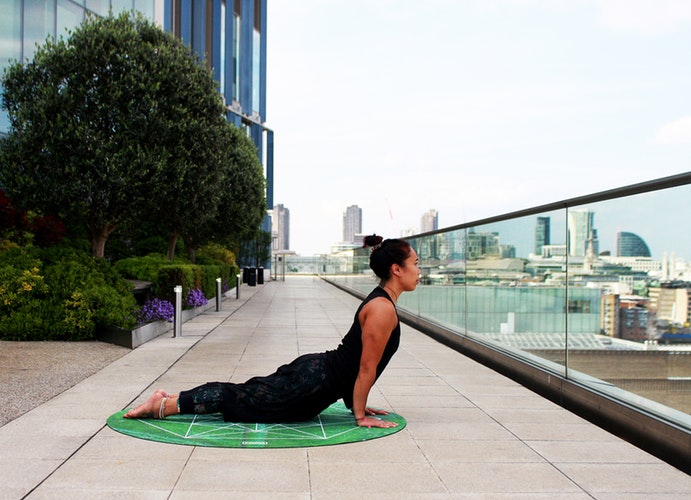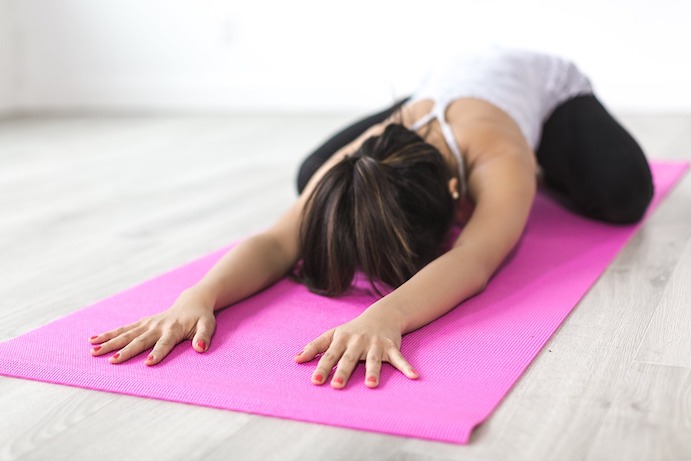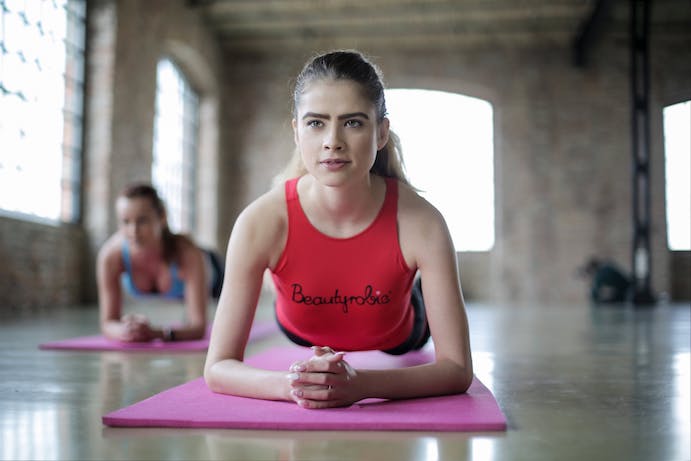7 Effective Exercises That Will Reduce Back Pain Faster
Exercise tips that are worth your while so you can pursue your favorite activities sooner
PUBLISHED:



Back Pain
Our backs are very important to us. It is common for those who are suffering from back pain to want to sit or lie down for most of the day, but gentle exercise and stretching often will provide the fastest relief. If you are suffering from back problems, follow these easy to do exercises, and you will be well rewarded.
These exercises are simple to do, quick, and require no equipment. You can do them on soft grass on a sunny day, on a firm exercise mat, or even in your bedroom.
One of the best things you can do to counter back pain, are gentle, well-purposed physical activity to accelerate recovery and relief. We cannot tell our patients enough that physiotherapy, acupuncture, or IMS treatment is most effective when coupled together with exercise and stretching. Our physical therapy clinic provides several suggested exercises to follow, such as the ones in the later section below.
Common Causes of Back Pain
The bulk of upper and lower back pain is musculoskeletal pain — pain which is generated from injury to muscles, joints, and ligaments around the spine. Back pain is a common reason to miss work or skip an event. Many people have experienced back pain at least once in their lives. Most causes of back pain are usually due to:
- Inactive lifestyles — back pain caused by weakened back muscles and stiffness.
- Prolonged sitting — poor posture and slouching while at your desk, computer, or mobile phone. Prolonged sitting puts pressure on the discs in your spine that can cause a dull, aching pain.
- Overexertion from a physical activity or an infrequent activity — when you work the back muscles too hard, or you use them for an extended period of time, it can cause muscle strain or muscle spasm.
- Medical symptoms — such as arthritis or osteoporosis.
- Excess weight — additional weight puts strain on the muscles and ligaments as well as aggravating disc movement.
- Weak core muscles — as a result of weak muscles surrounding the spine, the vertebrae will have less support. Core muscles help to eliminate some of the pressure on your spine.
Different Types of Back Pain
Managing back pain is a complex subject. Generally, there are two types of back pain — acute and chronic.
Acute back pain is characterized as short term pain in the back, usually caused by soft tissue damage from a sudden event or accident. It can happen right after lifting a heavier object or from an impact activity. The pain may sometimes be described as a muscle spasm or a sharp discomfort.
Generally, acute pain types do not last more than 2 or 3 months. Chronic back pain is irritable back pain that recurs daily, even after extended periods of time, where normal recovery would have already been expected. In severe injuries, tissues and muscles may have healed, but there may still be structural or nerve damage. Unfortunately, medical instruments are not effective at measuring pain, so it can be difficult to detect, except to the patient experiencing them. One form of treatment that has had particularly positive results when dealing with chronic pain is intramuscular stimulation (IMS) therapy.
Back Injuries
The most common back problems our patients report are:
- Back sprains
- Back strains
- Herniated disks
- Muscle spasms
- Fractured Vertebrae
In a back sprain, the symptoms include bruising caused by injury to a muscle or a tendon. In a back strain, the symptoms include muscle spasms caused by stretching or tearing of a ligament.
Whichever injury it might be, it is advisable to do gentle exercises which can help you in the long run. The exercises are safe to do, and often reduce pain intensity by 10 to 50%; Our patients frequently report positive results from back exercises and stretching.
Exercises
Preventative maintenance from injury is just as important as pain relief.
Unless you physically train every day, even if you are not experiencing a back injury, it is still advisable to follow a healthy routine for the back that can provide benefits as we age. Strengthening those core muscles and activating the back muscles daily, will reduce the onset of suffering from back pains in the future.
I have listed several simple exercises that you can do at home that can decrease pain and which will give you a healthier back. With a healthy back, the chances that you will one day suffer back pain or injury is much lower.
Wake Up Into a Back-Stretching Routine
Let's face it, most people are unenthusiastic at the thought of exercise in the morning. If there is a way where less effort is involved to get the same result, then more of us will follow through.
When you have just woken up, your bed is actually an excellent and convenient place to do these early morning stretches for your back.
The first three yoga exercises I recommend, the cobra pose, the child pose, and the locust pose, are all about integrating them into your daily morning routine. You can do these first three exercises in less than 10 minutes every morning.
1. Cobra pose — yoga

- Start off, by lying on your stomach with your hands near your shoulders and your palms facing down.
- Keep your legs relaxed — you will only be using your arm muscles for this, breathe slowly, and let your arms slowly push your upper body so there is a slight curve in your back.
- Try to hold this pose for 20 to 30 seconds if you can. Then gently let yourself back to the starting position on your stomach.
- Repeat this pose one more time.
This pose targets your lower back and abdominal muscles. You should feel a stretch in those areas.
2. Childs pose — yoga

- If you are coming from the starting position of the cobra pose, great! We can move to the resting position of the child pose. Move your buttocks backwards towards your feet, bending your knees, and resting your bodyweight on your forearms. Also, spread your knees so that they are slightly wider than your shoulder width.
- Next, gravitate your head and pelvis as far down as you can. It's okay if you are not very flexible — you only need to go low enough to feel a slight stretch.
- Finally, with your head down, reach your arms forward, as far as you can. Open your palms and stretch your fingers out.
- Hold this pose for 20 to 30 seconds, take a short rest, and then repeat it once more.
The child pose will give you a strong, but comfortable, stretch on your upper back muscles.
3. Locust pose — yoga
- Go back to the same starting position as the cobra pose, lying on your stomach. Instead of having your hands beside your shoulders, have your arms stretched behind you, touching the side of your legs.
- Slowly, raise your hands off the bed at the same time as your knees, while keeping both your arms and legs stretched out the entire time.
- Just stretch to where you feel comfortable — there is no need to overdo it.
- Try to do this pose twice, holding for 10 to 20 seconds each time.
The locust pose will give you a stretch for both lower and upper back.
Strengthening Core Muscles to Support Your Spine
Why are core exercises so important for back pain?
Your core muscles are in the center of your body. If your muscles around the back, especially the lower back, are weak, your body will rely more on the spine for stability and support.
Having a strong core will make it easier to do physical activities and reduce the stress on your lumbar so that you may feel less pain.
4. Partial Crunches — core

Sit-ups and crunches can hurt your neck, back, and tailbone if you are not careful, especially if you have had previous injuries. Partial crunches are great because they are a safer alternative, as you do not risk raising your torso as far up.
Lying down on your back with knees bent, slowly raise your back no more than a 30-degree angle off the floor, and return back down. Try to do 10 repetitions for 2 to 3 sets, unless it starts to feel uncomfortable.
Avoid doing crunches on an unpadded hard floor — get a mat.
Also, you should make sure not to pull on your neck when doing this exercise. If you cannot help it, put your fingertips on your ears.
Crunches are most effective when performed slowly.
5. Plank — core

Another safe exercise is holding the plank. This exercise is similar to yoga, in that the exercise does not involve movement, but instead is about holding a pose. The aim of the plank exercise is to keep your body straight, like a wooden board.
- Lie down flat on your stomach, with your palms facing down under your shoulders.
- Lift your body up, supporting your bodyweight with only your forearms and toes.
- Breathe normally and hold this position for 10 to 30 seconds.
- Lower yourself back down to the floor, take a 1-minute rest, and repeat this exercise 2 more times.
Stretching
With any injury, successful and faster recovery involves regular stretching. Without incorporating stretching into a daily rehabilitative routine, the time it takes for a full recovery would be lengthier.
The truth is, after any injury, some muscles in your body will experience atrophy (the degeneration of your muscle cells).
With a back injury, most likely there is a greater volume of muscles effected. When you begin exercising again, stimulating your muscles to recover, repair, and rebuild, you will suffer a great deal of muscle stiffness and soreness. While you may experience some relief through massaging the affected area, the effect would be short term and it would not be the treatment that provides the best impact for you.
While stretching will not make pain instantly go away, the back pain intensity should reduce within a week.
Regular stretching is a counter for stiff back muscles, reducing pain while your body self-heals.
6. "Reach for the Sun" — stretch

I do this particular stretch every day. It not only is good for my back, but it also awakens all the nerves, muscles, and ligaments and feels very rejuvenating.
By the name, this stretch sounds very simple to do, but there is a secret to stimulate all the muscles in your lumbar area.
- Stand tall, with your feet shoulder width apart, and with both hands beside your side.
- Check whether the area to your left is clear. Then check the right side. You are just making sure not to knock something over, because next, you are going to be moving your arms in an arc-like manner.
- Suck in your gut slightly to activate the core muscles.
- Now, very, very slowly, with your arms and fingers stretched all the way out, pretend to draw the sun with your hands, making a great big circle, moving your arms in an upwards arc.
- Your arms should form a narrow 'Y' shape. Lift your chin up slightly, and don't forget to breathe.
- Keeping the rest of your body still, slowly drop your arms from the 'Y' position to a 'T' position. Your arms should now be parallel to the ground. Again, very slowly reach back up towards the sun with your arms returning to a narrow 'Y' position. Really try to 'reach out' with your arms, as if you're struggling to grab onto something far away.
- Alternate these 10 times, and then take a rest. Perform this stretch 2 or 3 times.
When done properly, this can be a very potent stretch, not just for your back, but your entire upper body.
7. Single Knee To Chest — stretch
- Begin by lying down, flat on your back, with your knees bent, and your feet flat on the ground.
- Pull one knee towards your chest, while keeping your other foot on the ground.
- Grab the knee you have pulled with both hands, and hold the position for 10 to 20 seconds.
You will feel this stretch in the lower back and the back of your thighs. It is particularly effective for stretching your muscles when you have been sitting for prolonged periods of time.
Additional Tips To Avoid Back Pain
Pay attention to your posture
Especially if you know that your posture is bad. The truth is, our posture is subconscious; we are seldom aware of it while we are standing or sitting.
Most of the time when we are working, we are hunched over. Take the time to reflect and give yourself opportunities to stretch. Watch yourself while you are at the computer. Lead with the chest, as you walk and sit, not with the neck.
Lift Heavy Objects While Bending Your Legs
Take your time to lift objects. Even a sudden jerk from grabbing groceries bags out of the trunk of your car can cause back pain.
Bend your knees as you lift, holding the object as close to your body as you can, reducing the amount of torque needed to move the object. Your back will thank you.
What Next?
It is important to look for adaptations to the workplace and home to concentrate on core strengthening and improving flexibility in your back. The 7 exercises we selected are quite safe to do, but never over push it. Stretching should not be painful. There are very few health benefits from overstretching. Other types of stretches may have risks of straining your muscles, if done improperly or too quickly.
Remember, you should always seek a medical professional who can provide an accurate diagnosis for your experienced back pain symptoms.
If you were injured in an accident and are experiencing acute or chronic back pain, you should find a physiotherapist or a back pain clinic in your area who can provide specialized treatments and solid medical advice.
Don't let upper or lower back pain hold you back from full enjoyment of daily activities.

